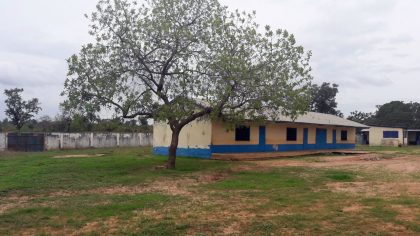This project is made possible through the partnership of WATER CHARITY and the NATIONAL PEACE CORPS ASSOCIATION. ![]()
This project has been completed. To read about the conclusion, CLICK HERE.
Location
Nema Village, Kiang Central District, Lower River Region. The Gambia
Community Description
Nema village is a community of about 3,000 people located in Kiang Central District along the Trans Gambia Highway. Its inhabitants are the Mandingo tribe “Farabo’’ (traditional leather workers) who migrated from the southern Senegal Cassamance region in the late nineteenth century. According to history, they migrated in search of pasture, water, and arable farmland as Cassamance was in a drought at that time. Subsistence farming is their livelihood with some elements of traditional leather works still practiced by a handful of people in the village.
The community has a health center that provides health services for 16 villages, some as far away as Cassamance in Southern Senegal. In the rainy season when malaria is at its peak, the health center sees about 450-500 patient visits per month. Out of this, 31% are children under 5-years-old. The health center conducts RDT Malaria tests, outpatient, inpatient, reproductive and child health services, family planning programs, monthly fortified vitamins for children, antenatal and postnatal services, etc.
 Problem Addressed
Problem Addressed
The Health Center
The health center does not have access to a water supply, which hinders its day-to-day hygienic management. Staff must walk 180 meters to fetch water to complete their daily tasks within the health center. The lack of water supply has led to the following problems, among others:
• The health center cannot conduct deliveries, resulting in most women delivering at home. This has led to severe complications.
• Antenatal care is more difficult.
• Reproductive and Child Health services is severely disrupted as staff walk a long distance to fetch water.
• The health center cannot maintain strict cleanliness, increasing the risk of infection.
• Low staff morale.
The Nursery School
The village nursery school next to the health center is also affected by the lack of water supply. According to the deputy headteacher, Mrs. Fadera, children from 3- to 6-years-old are enrolled in the school. It serves as an early childhood development center, preparing children for primary school education. Funded by a philanthropist, the 42-student school was opened in 2014.
Due to the lack of latrines at the nursery school, children do open defecation almost everywhere within the school compound much of the time without water to clean up. This causes health hazards.
• The low enrollment is due to the lack of water supply and latrines at the school. The lack of sanitary conditions, most parents decide to keep their children at home idle or go with them to the farm.
• To get water for the children, teachers have to walk a long distance to the village hand pump.
 Project Description
Project Description
This project aims to provide a safe and reliable water supply for the Nema health center and the nursery school, respectively.
The project consists of the following:
• 4.5-inch borehole at the health center with a high-quality solar pump which will provide sufficient water supply for both the health center and nursery school.
• Double-walled 2,000-liter storage tank.
• Steel tower, 6-meters tall to support the water tank. This will provide high-pressure water flow for both the health center and nursery school.
• 24 v. solar-powered water pump.
• Two 260-Watt solar panels with a secured frame to power the Pump.
• Four standpipes for the health center. Piping for the newly built staff quarters at the health center with extensive plumbing, providing two complete toilets, two shower heads, and two toilet taps. This will make water and hygiene accessible by staff at the staff quarters.
• Two showerheads for the outpatient, 1 hand-washing basin for the labor ward, complete toilet for the health center admission ward.
• Piping from the health center to the nursery school.
• Two standpipes for the nursery school. Children will have clean water to drink while at school.
• Two latrines for the nursery school.
• Hand-washing station for the nursery school.
Water charity funds will be used to pay for materials and skilled labor.
The community will do all unskilled labor and provide food for the workers.
Project Impact
6,000 people, many of them women and children, will benefit from the project.
Project Administration
Mike McConnell, Managing Trustee, GambiaRising, and Former Country Director for Peace Corps in The Gambia from 2007 through 2009, and Emily Lundberg, PhD., Head of the Working Water program at GambiaRising
Monitoring and Maintenance
The monitoring and maintenance team consists of Musa Fadera (Chief Nurse), Bakary Jawara (Nursery school headmaster), Abdoulie Jawara (head of the health center management committee) and Ebrima Marong (WAME/GambiaRising water program coordinator). This team will monitor the system after completion.
Let Girls Learn
Healthy children (and healthy mothers) are a precondition for girls learning. The project will help girls stay healthy and do well in school. The provision of ample water supply to the nursery and user-friendly clean latrines will also encourage parents to send their girls to school.
Project Funding
This project has been made possible through the generosity of an anonymous donor.
This project is part of our ongoing Western Africa Water & Sanitation Program, and donations using the Donate button below will be allocated to projects in that program.
Funds raised in excess of the project amount will be allocated to other projects in the country.



